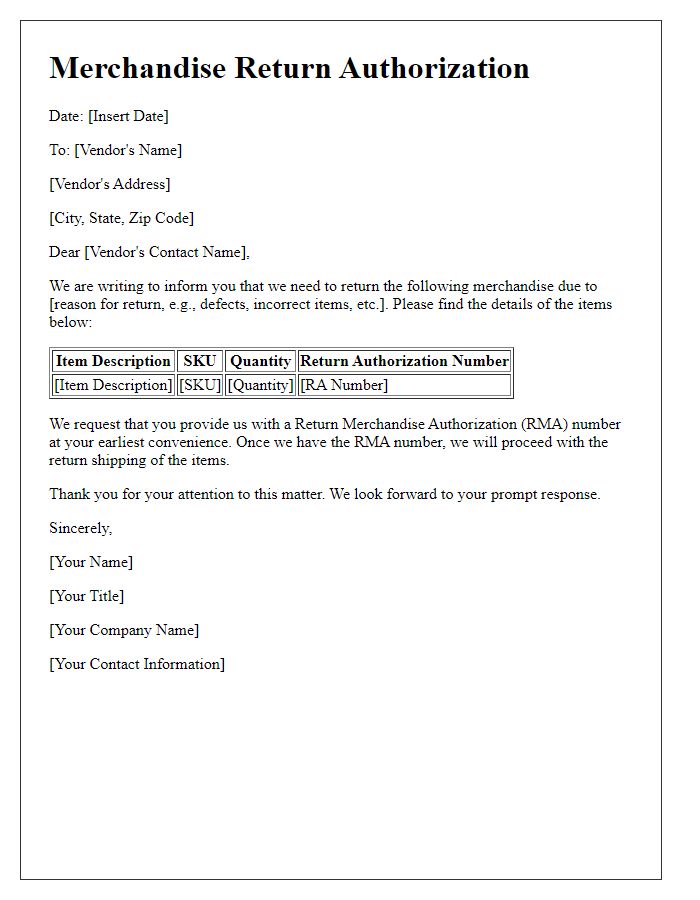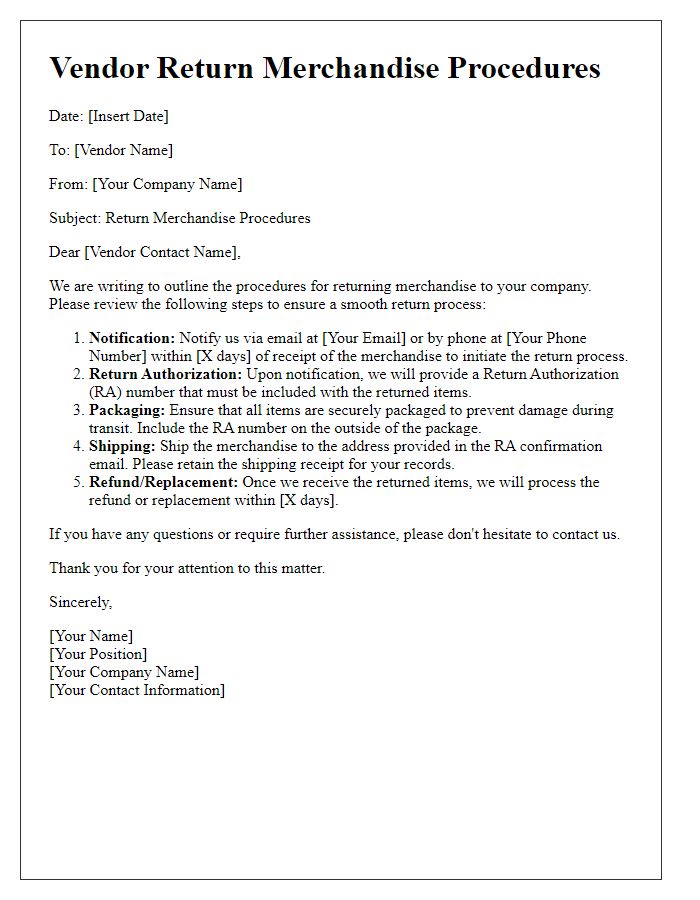When businesses need to manage returns efficiently, a well-structured vendor return merchandise authorization (RMA) letter is essential. This handy template streamlines communication, ensuring that both parties are on the same page regarding the return process. By outlining necessary details such as item descriptions, quantity, and reasons for return, it helps to prevent misunderstandings and improve the overall experience. Ready to dive deeper into crafting the perfect RMA letter? Let's explore further!

Clear subject line and reference number
A Vendor Returns Merchandise Authorization (RMA) request should include a clear subject line followed by a reference number for tracking purposes. The subject line can succinctly state "RMA Request for Order #123456". This allows instant recognition of the request's purpose. The reference number, typically unique to the transaction, helps streamline the process, ensuring that both the vendor and the requester can easily access the relevant order details. Including these elements facilitates clearer communication and quicker resolutions regarding the return of merchandise.
Vendor contact information
Obtaining a merchandise return authorization from vendors is a crucial step in the return process. This authorization ensures that returned items, such as defective electronics or excess inventory, are processed correctly. Vendors typically require detailed information, such as item numbers, quantity, and reason for return, to process the request efficiently. Accurate vendor contact information, including email addresses and phone numbers, is essential to facilitate clear communication during this process. Properly documenting all interactions enhances the efficiency and effectiveness of merchandise returns.
Detailed product information and reasons for return
In the pursuit of efficiently processing vendor returns, it is imperative to provide detailed product information including the SKU number (Stock Keeping Unit) and item description for each product being returned. Documentation must address the reasons for return, such as manufacturing defects, incorrect shipments, or unsatisfactory quality, which may include descriptions of specific issues encountered, like broken packaging or damaged items. Furthermore, customers should include order number and purchase date to streamline the return authorization process. Vendors often require images of the product and packaging to assess conditions prior to issuing return authorization. Adherence to these guidelines ensures clarity and expedites resolution for both parties involved.
Return authorization request and preferred resolution
Requesting merchandise return authorization is crucial for streamlining the return process with vendors. A successful return authorization (RA) facilitates the return of defective goods, typically within a specific timeframe, often 30 days or less from the purchase date. This request should clearly outline the item details, such as SKU numbers and product descriptions, to avoid delays. Preferably, the resolution sought should be articulated, whether it entails a full refund, an exchange for new items, or store credit. Including relevant purchase order numbers simplifies the vendor's tracking process. Adhering to the vendor's specific return policies helps in ensuring prompt handling of the request.
Thank you note and contact details
In business operations, issuing a Return Merchandise Authorization (RMA) can streamline the process of returning faulty products. Acknowledgment of the return request enhances customer satisfaction and reinforces professional relationships. For instance, after receiving an RMA, sending a gratitude note can express appreciation for the vendor's cooperation. Contact details, such as the customer service number, email address, and business hours, ensure clear communication for the return process. Additionally, documenting the order number and original purchase date serves as a reference for tracking the return. An organized RMA process can significantly reduce delays and maintain a positive vendor-client rapport.
















Comments